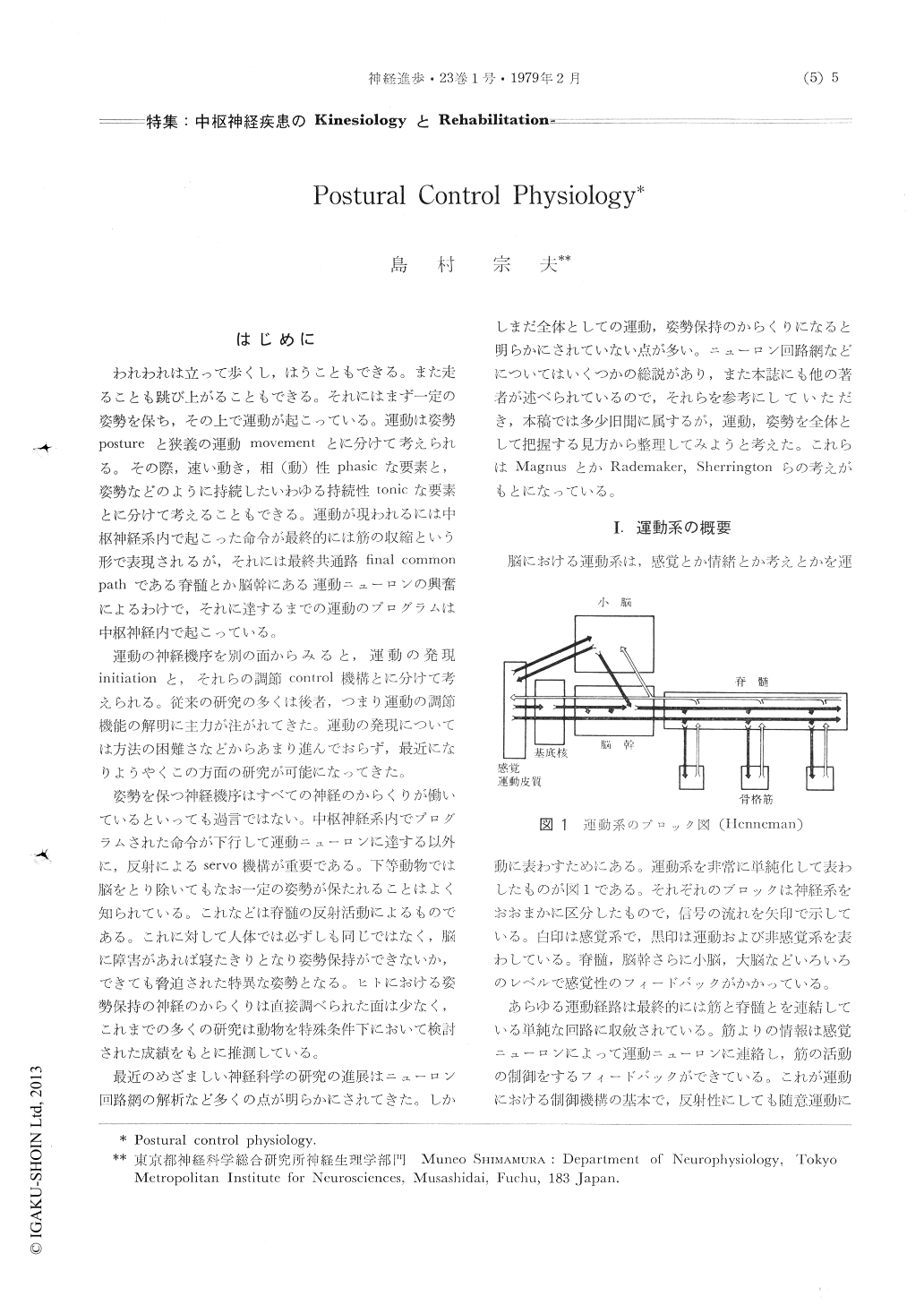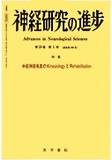- 有料閲覧
- 文献概要
- 1ページ目
はじめに
われわれは立って歩くし,はうこともできる。また走ることも跳び上がることもできる。それにはまず一定の姿勢を保ち,その上で運動が起こっている。運動は姿勢Postureと狭義の運動movementとに分けて考えられる。その際,速い動き,相(動)性phasicな要素と,姿勢などのように持続したいわゆる持続性tonicな要素とに分けて考えることもできる。運動が現われるには中枢神経系内で起こった命令が最終的には筋の収縮という形で表現されるが,それには最終共通路final commonpathである脊髄とか脳幹にある運動ニューロンの興奮によるわけで,それに達するまでの運動のプログラムは中枢神経内で起こっている。
運動の神経機序を別の面からみると,運動の発現initiationと,それらの調節control機構とに分けて考えられる。従来の研究の多くは後者,つまり運動の調節機能の解明に主力が注がれてきた。運動の発現については方法の困難さなどからあまり進んでおらず,最近になりようやくこの方面の研究が可能になってきた。
Abstract
The use of the word "posture" implies that at least some of the muscles are exerting forces which act against gravity to hold the body in a particular position. Overt voluntary activity usually implies change of posture, that is to saya change in the relative positions of the parts of the body. These changes in relative position are brought about by changes in these forces devel-oped by the various skeletal muscles.
Mechanisms involved in the regulation of posture necessarily includes many of fundamental events of neurophysiology.

Copyright © 1979, Igaku-Shoin Ltd. All rights reserved.


